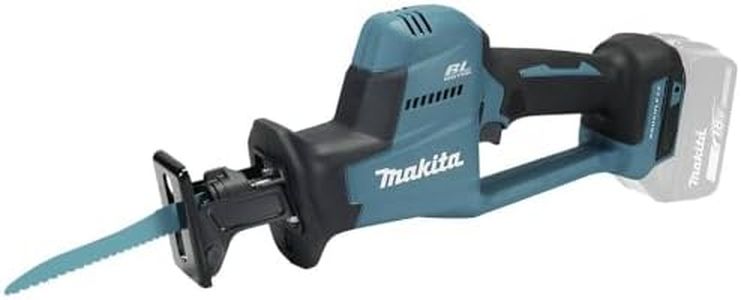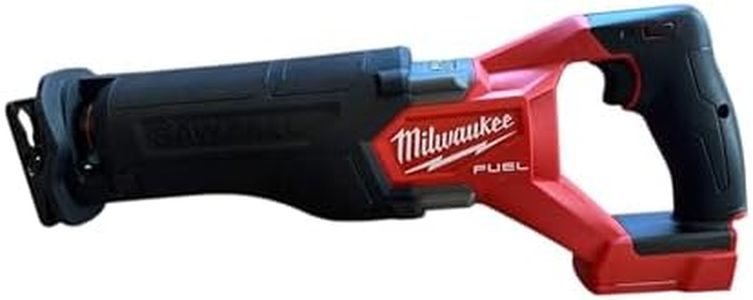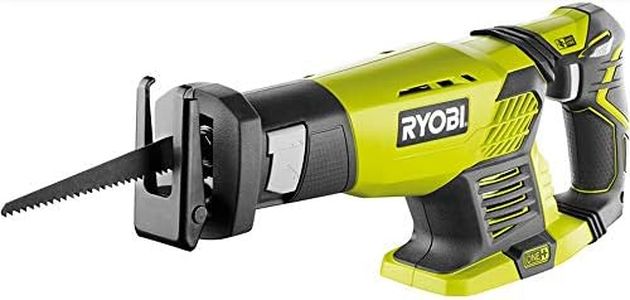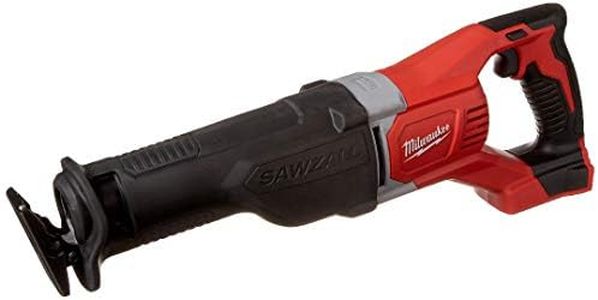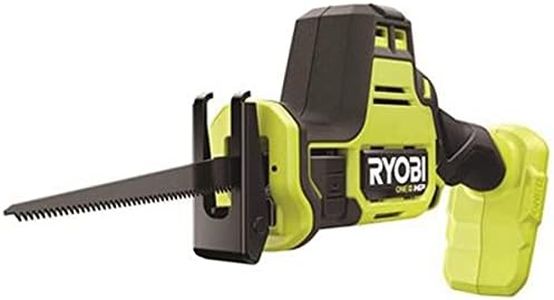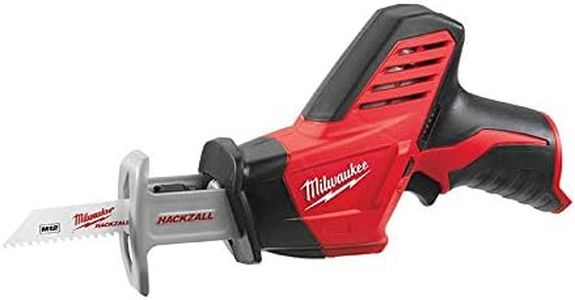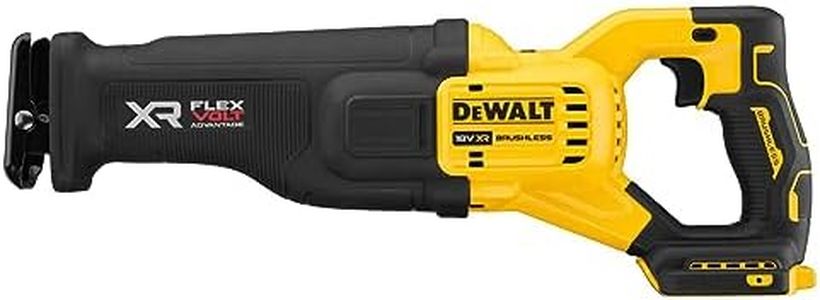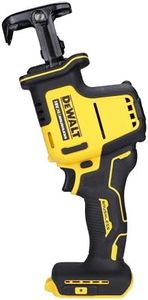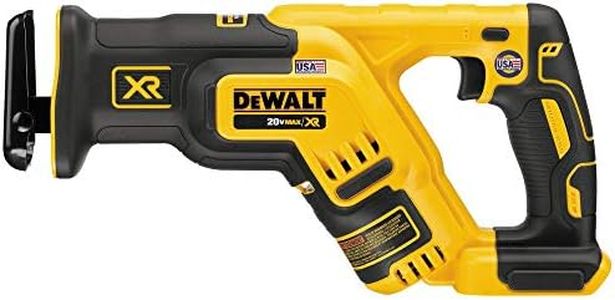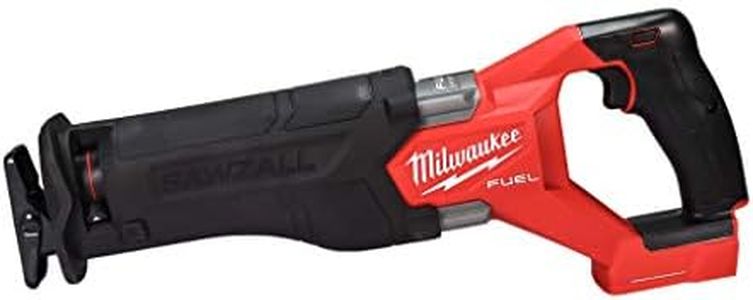We Use CookiesWe use cookies to enhance the security, performance,
functionality and for analytical and promotional activities. By continuing to browse this site you
are agreeing to our privacy policy
10 Best sawzalls
From leading brands and best sellers available on the web.Buying Guide for the Best sawzalls
Choosing the right sawzall, also known as a reciprocating saw, can make demolition, renovation, or pruning tasks much easier and safer. Start by thinking about what types of materials you'll be cutting, how often you'll use the tool, and the environments you'll typically work in, such as tight spaces or outdoors. Your specific needs should help you decide which features to prioritize, ensuring the sawzall you pick is both comfortable and effective for your work.Power SourceThe power source, which is usually either corded (plug-in) or cordless (battery), determines how flexible and powerful your sawzall will be. Corded models provide constant power and tend to be better for heavy-duty or continuous work, but they require access to electrical outlets and limit mobility. Cordless models offer greater portability and convenience, especially for outdoor or remote work, but run time depends on battery life and they may offer less power for challenging jobs. Think about where you'll use your saw most often to choose the best type for your needs.
Power Rating (Amps/Volts)For corded sawzalls, power is typically measured in amps, while cordless models use volts. Higher numbers suggest more cutting strength. Light to medium tasks like cutting wood or plastic are served well with lower ratings (8–10 amps or 12–18 volts), while tougher jobs like metal or thick lumber may need more powerful sawzalls (11+ amps or 18–20+ volts). Match the power rating to the materials and frequency of use—a stronger tool is useful for demanding projects, while a lighter one is better for occasional, simple jobs.
Stroke LengthStroke length is the distance the blade moves back and forth with each cycle. Longer strokes (around 1.1–1.25 inches) mean faster cutting as the blade goes deeper into the material, making them suited for demolition or large, rough cuts. Shorter strokes (around 0.9–1 inch) allow for more precise and controlled cuts, which are helpful in tight spaces or for detailed work. Consider whether you need speed and aggressiveness or more control when picking stroke length.
Strokes Per Minute (SPM)SPM refers to how many times the blade moves in a minute. Higher SPM (2,500–3,000+) enables faster cuts, especially in softer materials, while a lower SPM may be more appropriate for harder materials or when you want more accuracy. Many sawzalls have variable speed triggers, allowing you to adjust the SPM on the fly. If your projects require both rough cuts and careful work, look for adjustable speeds. Match the SPM to the types of materials you’ll most commonly cut.
Weight and ErgonomicsWeight determines how comfortable and easy the sawzall is to handle, especially during long tasks or when working overhead. Lighter tools (around 6–8 pounds or less) reduce fatigue and suit overhead work or tight spaces. Heavier models offer more stability and less vibration, which can help with control for tough cuts. Consider your own strength, the amount of time you’ll use the tool continuously, and whether you need compactness or extra stability.
Blade Change MechanismMost modern sawzalls use a tool-less blade change system, allowing quick and easy switching of blades by hand. This is especially handy if you'll be changing blades frequently for different materials. Less convenient systems may require tools for changing blades and can slow down your workflow. If you plan on switching between different jobs often, prioritize a tool-less system for efficiency.
Adjustable ShoeAn adjustable shoe is a metal plate at the end of the saw that can be extended or moved to steady the saw and control the depth of the cut. This feature improves blade life and cutting accuracy. It's particularly useful for making plunge cuts or working at different angles. If your tasks are varied and require flexible cutting positions, this is a helpful feature.
Vibration ControlVibration control is about how well the sawzall reduces hand and arm vibration during use. Models with better vibration dampening are more comfortable to use for long periods, helping to prevent fatigue and increase precision. If you expect long projects or have any wrist/hand concerns, prioritize sawzalls with good vibration reduction.
